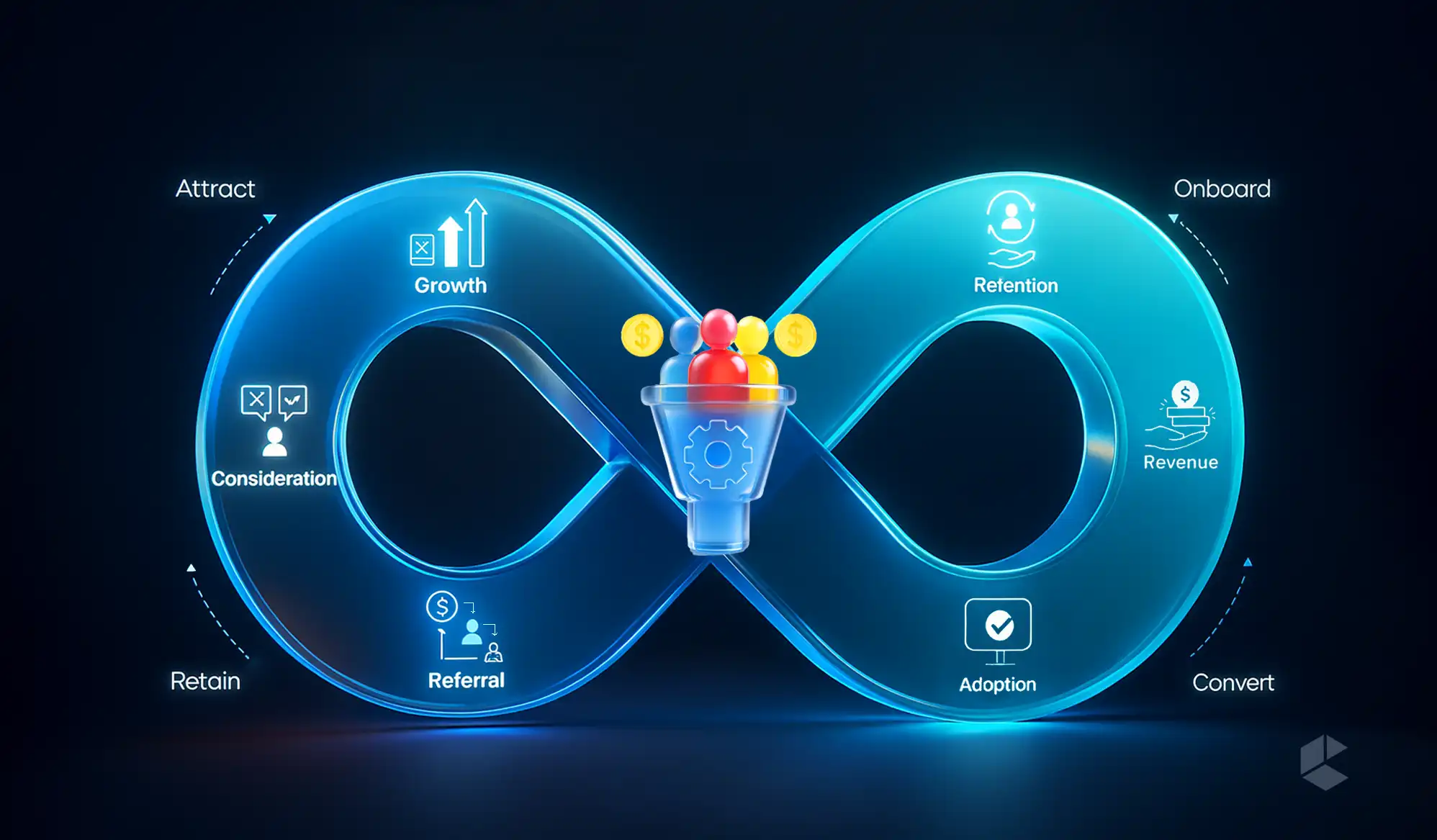- Mobile-first design helps you get hold of a huge number of mobile shoppers.
- Google’s mobile-first indexing means your mobile site is essential for your SEO rankings.
- Mobile-first helps you get better site speed, deliver superior user experiences, and enjoy higher conversion rates.
- With the rising use of mobile devices, mobile payment, and social commerce, users expect a flawless mobile shopping experience.
- Mobile-first is superior to responsive design, as it is built dedicatedly for small screens.
- Mobile-first design is highly important to get a flawless omnichannel experience.
Scroll. Tap. Swipe. That’s the shopping journey for millions of people globally today. The advent of smartphones has completely transformed the traditional desktop-first approach to online shopping. In this new mobile-focused reality, if your eCommerce brand is not thinking “mobile-first”, you are simply giving your customers permission to leave with an exasperated sigh and a cart full of products left behind.
Mobile optimization is no longer an afterthought. A mobile-first eCommerce approach in 2025 is not optional; it is a necessity.
This blog explains why mobile-first matters more than ever, how it transforms user experience, and what advantages eCommerce businesses will experience if mobile is prioritized.
What is the Mobile-First Approach?

A mobile-first approach means that an eCommerce platform is designed and optimized for smartphones and tablets first. Then it is scaled up for platforms with larger screens like desktops. Instead of optimizing desktop sites for mobile, companies first build an experience for the smallest screen, and focus on core functionalities to keep it seamless, fast, and intuitive from the very start. Not to say that the desktop experience is irrelevant anymore, but it means that mobile is no longer secondary, it is the main character.
Why Mobile-First is a Must in 2025
1. Mobile Traffic is Dominating
Over 60% of total web traffic is being received from mobile devices in 2025. In eCommerce, mobile traffic is surpassing desktop traffic, and the majority of shoppers are using mobile devices to conduct the full range of shopping experience from discovery, browsing, and purchasing products. If you don’t have a mobile-friendly store in 2025, you’re essentially ignoring and losing most of your customers.
Research compiled by Oberlo finds that not only is mobile traffic growing, but m-commerce sales are projected to reach $3.35 trillion by 2025, making up the majority of the total eCommerce revenue. This is not a wave; it’s a tidal change.
2. Google’s Mobile-First Indexing
Google established a long time ago that mobile-first indexing is here to stay. This means that Google will primarily use your mobile site when it comes to crawling, ranking, and indexing your website. Therefore, if your mobile version of the website is lacking in content, usability, or performance, your search results will suffer because desktop performance won’t save you.
To put it simply: your mobile site is your primary website for Google.
3. The Growth of Social Commerce and Mobile Payments
In today’s eCommerce ecosystem, we often begin our buying journey on social media – be it an Instagram ad, a TikTok reel, or a Pinterest Pin. And the formats are inherently mobile! If your store isn’t set up to cater to interactions on mobile, then you’re restricting the customer buying flow.
Also, digital wallets, such as Apple Pay, Google Pay, and UPI (in India) are on the rise, so mobile checkouts are smoother than ever. Ecommerce brands that allow fast and secure mobile payments reduce friction, which translates to a much higher rate of conversion.
Benefits of Mobile-First Ecommerce
Mobile-first commerce comes with a number of benefits, especially when mobile devices have become the primary source of product browsing and buying.
1. Better User Experience (UX)
When you are going mobile-first, you have to think simple. Mobile screens are smaller, so there should always be less distractions with cleaner interfaces, simple navigation, and a faster, simpler shopping experience, all of which are factors that contribute to conversions.
Mobile-first websites are not only faster but they also encourage easy product discovery, with optimized touch interactions, vertical scrolling, and minimalist design.
2. Fast Load Times = Low Bounce Rates
Let’s be clear: when it comes to mobile speed, it matters. If your mobile site takes more than 3 seconds to load, over 50% of users will just bounce. The mobile-first design keeps all content trim, optimized for performance, and loads quickly, even in slower connections! (this is something a desktop-first design is often unable to deliver).
3. Higher Conversion Rate on Mobile
According to Agital, when brands go mobile-first, they tend to have higher conversion rates. Why? Because, mobile-first does not only make things look better, but it also makes things work better: faster checkouts, easier product discovery, and seamless UI make it easier for users to click “Buy now”.
And we cannot forget about urgency-driven tactics, like mobile-only offers, tap-to-call support, and one-click reordering, which naturally fit into mobile intent.
Mobile-First vs. Mobile-Friendly: Know the Difference
- Many businesses confuse mobile-friendly with mobile-first, but there is a difference. Mobile-friendly is basically a miniature, scaled-down version of the desktop experience. Yes, it “works” on phones, but it typically feels clunky or incomplete.
- A mobile-first site is designed from the ground up focusing only on mobile, meaning everything about its fluid responsiveness, thumb-friendly designs, and mobile UX is considered for design.
All mobile-friendly sites are like fitting square pegs in a round hole. On the contrary, mobile-first sites are like drawing a perfect circle from the very beginning.
Popular Mobile-First Design Principles in eCommerce
Vertical Navigation
Mobile first design does not use desktop-style horizontal menus or dropdowns. Mobile-first design relies on scrolling while the menus are generally put behind a hamburger icon. For product listings, this means stacking items vertically instead of horizontally. In terms of the mobile experience of the users, this method is better as users use their thumbs to scroll instead of clicking links.
Large Tap Targets
On the desktop, users have a mouse cursor that can click tiny links. When it comes to mobile devices, they are limited by the size of their fingertips. Fingers are uncooperative and clumsy, so the buttons and CTAs should be resized and made larger for mobile devices to avoid accidental clicks that frustrate users.
Clutter-Free Designs
Mobile has very limited screen size. A mobile-first approach includes clean layouts, generous amounts of white space, and focused blocks of content. Each of these will keep users from getting lost in the clutter of your site and keep their interest. Less fluff, more focus.
Gesture-Friendly Design
A good mobile-first eCommerce experience includes native-like gestures. From swiping through product carousels and pinch-to-zoom on product images to swipe-back navigation, having these gestures on your eCommerce site instantly makes it more premium, user-friendly, and trustworthy. But while doing all that, you should also maintain the seamless feel.
Optimized Media
Heavy images and bloated videos kill mobile performance. A mobile-first design process has features like image compression, adaptive file formats like WebP, and lazy loading, where media loads only when it needs to, making everything faster and better for users.
What Happens When You Ignore Mobile-First?
Ignoring mobile-first is a missed opportunity, but it’s also dangerous. Here is what is at stake:
1. Bounce Rates Will Go Through the Roof
Mobile users are not forgiving of slow or clunky websites, and if your ecommerce store looks like it’s on dial-up or is designed like it’s from 2012, they will not spend their time waiting around. They will bounce faster than a tennis ball at Wimbledon. A poor experience on mobile causes:
- High bounce rates
- Low page views per session
- Short session duration
This has significant repercussions for your SEO, brand, and bottom line at the end of the day.
2. SEO Going Downhill
Google’s mobile-first indexing means that if your website does not perform well on mobile, then it will have a negative impact on search engine rankings. If your mobile site is slow, big and bloated, or lacks key content, don’t expect to be in the top search results.
CMSWire highlights that many eCommerce brands experienced a drastic drop in SEO results just because their robust desktop site did not translate to a good mobile experience. They essentially treated their mobile site as an afterthought.
3. Lost Revenue Opportunities
If users get a bad experience when they visit your site using their mobile device, like not being able to easily navigate your site, zoom in to product images, or complete a checkout without the use of a stylus and magnifying glass, they will abandon the cart! Mobile cart abandonment is already a problem – don’t make it worse by adding to it!
According to Techosquare, 70% of mobile shoppers abandon carts because of poor mobile UX. That is a lot of revenue that could go down the drain.
Mobile-First Success Stories
Here are top global brands that are leveraging a mobile-first approach to boost their sales and revenue.
Amazon: The Gold Standard
Amazon’s mobile app and website are great examples of mobile-first done well. One-click purchasing, loading, personalized recommendations, everything optimized for thumbs not mice. Amazon proves that mobile-first is beyond UI – it’s frictionless at every interaction.
Myntra: The App-First Success Model
Myntra is one of India’s leading fashion eCommerce platforms that made the jump to an app-first model in 2015. While it raised some eyebrows in 2015, it resulted in higher user engagement and repeated purchases from mobile-native Gen Z and millennial users.
Zara: Mobile First with Omnichannel
Zara uses its mobile-first site to connect customers to its physical stores. Whether checking a product’s in-store availability, using extensive product tagging for scanning, or building a seamless omnichannel experience, Zara demonstrates that mobile-first is not simply about mobile ‘only’ – it is about mobile ‘first’.
Mobile-First and Omnichannel Ecommerce: The Dynamic Duo
In the modern world, users can discover your product on Instagram, check reviews on mobile, then convert on desktop, or vice versa. The nonlinear nature of the user journey is the reason mobile-first and omnichannel exist together.
Here are ways a mobile-first experience strengthens omnichannel:
- Consistent Experiences: Mobile-first approach means that regardless of where the user lands (email, app, web, or social), the flow will be consistent and optimized for conversion.
- Click & Collect: The user searches for a product on mobile, finds it at their local store, and simply picks it up. Seamless.
- Contextual Engagement: SMS marketing, push notifications, and all location-based services – all live on mobile.
Mobile-first is the foundation of a frictionless omnichannel ecosystem.
How to Create a Mobile-First Ecommerce Experience
Now that we have gone over the details, let’s see how eCommerce businesses can commit to mobile-first, especially if they have a lot of catching up to do!
Prioritize Performance from Day One
Speed is the currency of mobile eCommerce. Look to compress assets, get rid of JavaScript bloat, enable caching, and use a robust hosting service. Use tools like Google PageSpeed Insights to find and fix what is making your store load slow, especially on mobile connections.
Rethink Navigation of Smaller Screens
The mobile device is essentially space-limited. If you want streamlined navigation on mobile devices, embrace hamburger menus, collapsible filters, sticky headers and search bars in obvious locations to minimize the number of actions it takes to locate products and options for decision-making.
Streamline Checkout
On mobile, every extra field (or screen) is a conversion killer, so use autofill, guest checkout, saved payment methods, and fast access to digital wallets like Apple Pay, Google Pay, and UPI to keep the conversion process as optimized and simple as possible.
Use a Combination of Responsive and Adaptive Design
Responsive design changes layout based on screen size, and adaptive design changes content based on device type. A mobile-first eCommerce store will use aspects of responsive and adaptive design to show the best version of the eCommerce site possible, whether it is on a basic Android phone or an iPhone 16 Pro.
For example, the mobile version may:
- Utilize product sliders instead of multi-row grids
- Place prioritized product details above-the-fold
- Eliminate superfluous desktop elements such as sidebar banners
Test Rigorously on Real Devices
Mobile emulators are not sufficient. Test your site on actual devices, different screen sizes, different operating systems, and network speeds. Make sure to include old phones and 3G networks to make sure your experience is suitable for users in low-bandwidth environments.
Focus on Mobile KPIs
You not only need to consider performance for a mobile site, but you also need to analyze the metrics from a mobile perspective including:
- Mobile conversion rate
- Cart abandonment rate on mobile
- Mobile bounce rate
- Average page load time for mobile
These metrics indicate where the user experience fell short and how well your mobile-focused initiatives are paying off.
If users can interact and complete their goals effectively and seamlessly in poor connectivity environments, you are indeed a mobile-first business.
Final Thoughts: Mobile-First Equals Customer-First
Mobile-first is not a fad. It is a strategic necessity that comes from how real people shop these days. It’s about realizing that real people are scrolling on their commute, shopping while Netflix plays in the background, and they want it fast and flawless. Brands that see this and build for this will win in eCommerce. And brands that don’t? Well, their bounce rate can tell the story.
FAQs
A mobile-first approach in eCommerce is designing your eCommerce store for mobile devices, especially smartphones, and smaller screens first. Once you make sure that your mobile version performs well, you scale it up to your desktop version.
Mobile-friendly is adapting your desktop site for phones, whereas a mobile-first approach is building it for phones. This means in your mobile-first sites, speed becomes faster, usability is improved, and conversions increase.
Google uses mobile-first indexing meaning the mobile version of your site will determine your rankings. Poor mobile performance can impact your visibility and traffic, and without traffic, you will not have eCommerce sales.
Yes, the mobile-first design will remove friction by simplifying browsing and checkout on phones, which often increases mobile conversion rates. Many businesses report that their mobile conversion rates tripled after transitioning to a mobile-first design.
Responsive design is better than nothing, but mobile-first is always better than responsive design. In a mobile-first approach, you’re not just downsizing the website for smaller screens, you’re designing your website for mobile users first.









